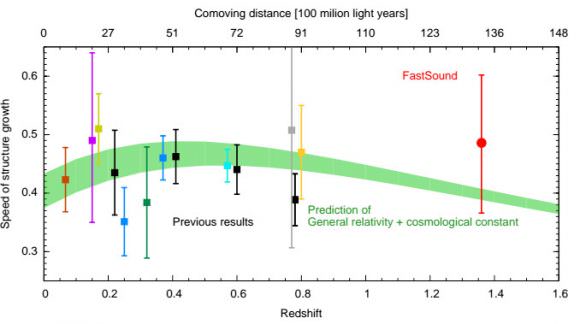On June 30th, 1905, Albert Einstein started a revolution with the publication of theory ofSpecial Relativity. This theory, among other things, stated that the speed of light in a vacuum is the same for all observers, regardless of the source. In 1915, he followed this up with the publication of his theory of General Relativity, which asserted that gravity has a warping effect on space-time. For over a century, these theories have been an essential tool in astrophysics, explaining the behavior of the Universe on the large scale.
However, since the 1990s, astronomers have been aware of the fact that the Universe is expanding at an accelerated rate. In an effort to explain the mechanics behind this, suggestions have ranged from the possible existence of an invisible energy (i.e. Dark Energy) to the possibility that Einstein’s field equations of General Relativity could be breaking down. But thanks to the recent work of an international research team, it is now known that Einstein had it right all along.
Using the Fiber Multi-Object Spectrograph (FMOS) on the Subaru Telescope, the team – which was led by researchers from Japan’sInstitute for the Physics and Mathematics of the Universe (Kavli IMPU) and the University of Tokyo – created the deepest 3-D map of the Universe to date. All told, this map contains some 3,000 galaxies and encompasses a volume of space measuring 13 billion light-years.

Experimental results looking at the expansion of the universe, in comparison to that predicted by Einstein’s theory of general relativity in green. Credit: Kavli IPMU/Okumura et al.
To test Einstein’s theory, the team – which was led by Dr. Teppei Okumura, a Kavli IPMU Project Researcher – used information obtained by the FastSound Project over the past few years. As part of their effort to ascertain the origins of cosmic acceleration, this project relies on data collected by the Subaru telescope to create a survey that monitors the redshift of galaxies.
From what was observed over the course of 40 nights (between 2012 and 2014), the FastSound Survey was able to determine the on velocities and clustering of more than 3,000 distant galaxies. Measuring their redshift space distortions to see how fast they were moving, Okumura and his team were able to track the expansion of these galaxies out to a distance of 13 billion light-years.
This was an historic feat, seeing as how previous 3-D models of the Universe have not been able to reach beyond 10 billion light years. But thanks to the FMOS on the Subaru Telescope, which can analyze galaxies 12.4 to 14.7 billion light-years away, the team was able to break this record. They then compared the results to the kind of expansion predicted by Einstein’s theory, particularly the inclusion of his cosmological constant.
https://linksredirect.com/?pub_id=11719CL10653&subid=5&url=http%3A//www.99tshirts.com/
No comments:
Post a Comment